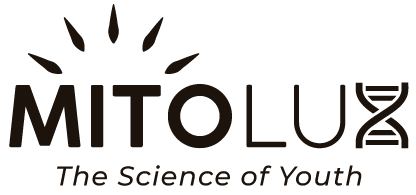Red light therapy, also known as photobiomodulation (PBM), has made waves in the scientific and wellness communities alike for its reported health benefits. From rejuvenating skin to aiding muscle recovery, PBM has a range of applications. But how exactly does this seemingly magical light lead to such impressive physiological effects? Let's unravel the chemical and cellular mechanisms behind red light therapy.
1. ATP Production Stimulation
The Science: At the heart of every cell is the mitochondria, often dubbed the "powerhouse" of the cell. One of the primary pathways through which red light therapy is believed to exert its effects is by enhancing the mitochondria's ability to produce adenosine triphosphate (ATP). ATP is the primary energy currency of the cell, vital for almost every cellular function.
When cells are exposed to red and near-infrared light, an enzyme called cytochrome c oxidase (CCO) in the mitochondria absorbs this light, leading to an increase in its activity. This, in turn, accelerates the electron transfer process involved in the synthesis of ATP. (source)
Implications: Increased ATP production can promote faster cell growth and repair, enhance performance, and even reduce inflammation.
2. Reactive Oxygen Species Modulation
The Science: While often vilified, reactive oxygen species (ROS) are signaling molecules that can play a beneficial role in cellular function. They can stimulate the body's natural healing processes and improve cellular communication.
Red light therapy influences the generation of ROS. The exact effect can depend on the light's intensity, wavelength, and duration of exposure. Low levels of red light can increase ROS, stimulating protective cellular activities. On the other hand, prolonged or intense exposure might reduce ROS levels, offering a protective mechanism against oxidative stress. (source)
Implications: Proper modulation of ROS can aid in reducing inflammation, promoting healthy cellular function, and even combating premature aging.
3. Nitric Oxide Liberation
The Science: Nitric oxide (NO) is another molecule with dual faces. While essential for various cellular functions, its excess can inhibit the respiratory chain and reduce ATP production. Red light therapy can help displace NO from CCO, thus promoting ATP synthesis and overall cellular respiration. (source)
Implications: Enhanced cellular respiration can be crucial for tissue repair, reducing inflammation, and improving overall cellular health.
4. Activation of Transcription Factors
The Science: Red light therapy can activate specific transcription factors – proteins that control the rate of transcription from DNA to mRNA. The activation of these factors, such as nuclear factor kappa-light-chain-enhancer of activated B cells (NF-κB), can lead to the expression of genes responsible for cell survival, repair, and even immunity. (source)
Implications: By influencing gene expression, red light therapy can direct cells towards survival and repair pathways, offering therapeutic benefits in conditions like injuries or inflammation.
5. Enhancement of Collagen Production
The Science: Collagen, a primary protein in our skin and connective tissues, is vital for skin health and elasticity. Red light exposure has been shown to stimulate fibroblasts, the cells responsible for producing collagen. This can lead to increased collagen production and enhanced skin health. (source)
Implications: An increase in collagen can reduce wrinkles, enhance skin elasticity, and improve overall skin health.
Exploring Uncharted Territories: Theories and Speculations
Beyond these established pathways, several theories speculate other mechanisms of action for red light therapy:
- Lymphocyte Activity: There's budding interest in PBM's effect on lymphocyte activity and its potential implications for immune health.
- Stem Cell Activation: Preliminary studies hint that red light might stimulate stem cells, thus aiding in tissue repair and regeneration.
- Enhanced Blood Flow: Some believe that red light therapy can influence vasodilation, promoting better blood flow and nutrient delivery to cells.
While these mechanisms hold promise, more research is necessary to solidify these theories.
Conclusion
The beauty of red light therapy lies in its multifaceted approach to health. By targeting multiple cellular pathways, it offers holistic benefits. As science delves deeper into PBM, we continue to uncover the intricate dance of photons and cells, revealing the profound impact of light on our health and well-being.
Disclaimer: This article is for informational purposes only and does not constitute medical advice. Always consult with a healthcare professional for medical concerns.


